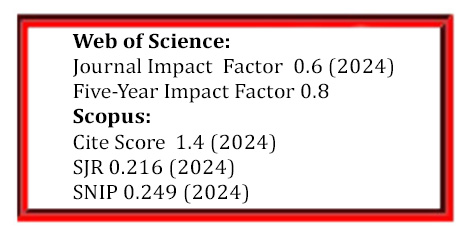Microstructure and Visible Light Photocatalytic Studies of CeO2 Doped ZnO Nanoparticles
DOI:
https://doi.org/10.5755/j02.ms.38408Keywords:
cerium oxide, zinc oxide, XRD, antibacterial, photocatalytic activity, nanoparticlesAbstract
Cerium oxide (CeO2) doped with zinc oxide (ZnO) nanoparticles were synthesised using sol-gel method. The impact of CeO2 doping on the microstructure, optical, photocatalytic, and antibacterial properties of ZnO nanoparticles (NPs) were investigated. XRD results showed the presence of both CeO2 and ZnO phases. The ZnO sample crystallizes into a hexagonal wurtzite structure and CeO2 with a cubic structure. The crystallite sizes were estimated and found to be 18 nm and 29 nm for the CeO2 and ZnO, nanoparticles respectively. FTIR spectrum reveals the formation of chemical bonds. The FESEM studies showed the formation of dense crystallites with aggregation. The EDX studies confirmed the presence of cerium, zinc, and oxygen in the sample, and no additional peaks have been detected. The UV-Visible spectroscopy analysis revealed the bandgap of 3.15 eV. The photodegradation activity of the nanoparticles with methylene blue (MB) dye was carried out using visible light irradiation and the degradation efficiency was found to be 75.81 % in 1 h duration. The antibacterial susceptibility test was conducted using the agar well diffusion method to investigate the activity of CeO2 doped ZnO nanoparticles against E. coli, Salmonella typhimurium, Bacillus cereus, and Shigella flexneri, and the results showed significant antibacterial activity as compared to the control drug penicillin.
Downloads
Published
Issue
Section
License
The copyrights for articles in this journal are retained by the author(s), with first publication rights granted to the journal. By virtue of their appearance in this open-access journal, articles are free to use with proper attribution in educational and other non-commercial settings.



